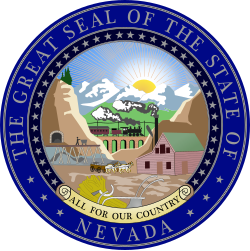| |||||||||||||||||
| |||||||||||||||||
 County results Guinn: 40–50% 50–60% 60–70% 70–80% Jones: 40–50% | |||||||||||||||||
| |||||||||||||||||
| Elections in Nevada |
|---|
 |
The 1998 Nevada gubernatorial election occurred on November 3, 1998. Incumbent Democrat Bob Miller was term limited. Republican nominee Kenny Guinn defeated Democratic nominee Jan Laverty Jones. This was the first open seat Nevada gubernatorial election since 1978, and the first time since then that a Republican was elected Governor of Nevada.

